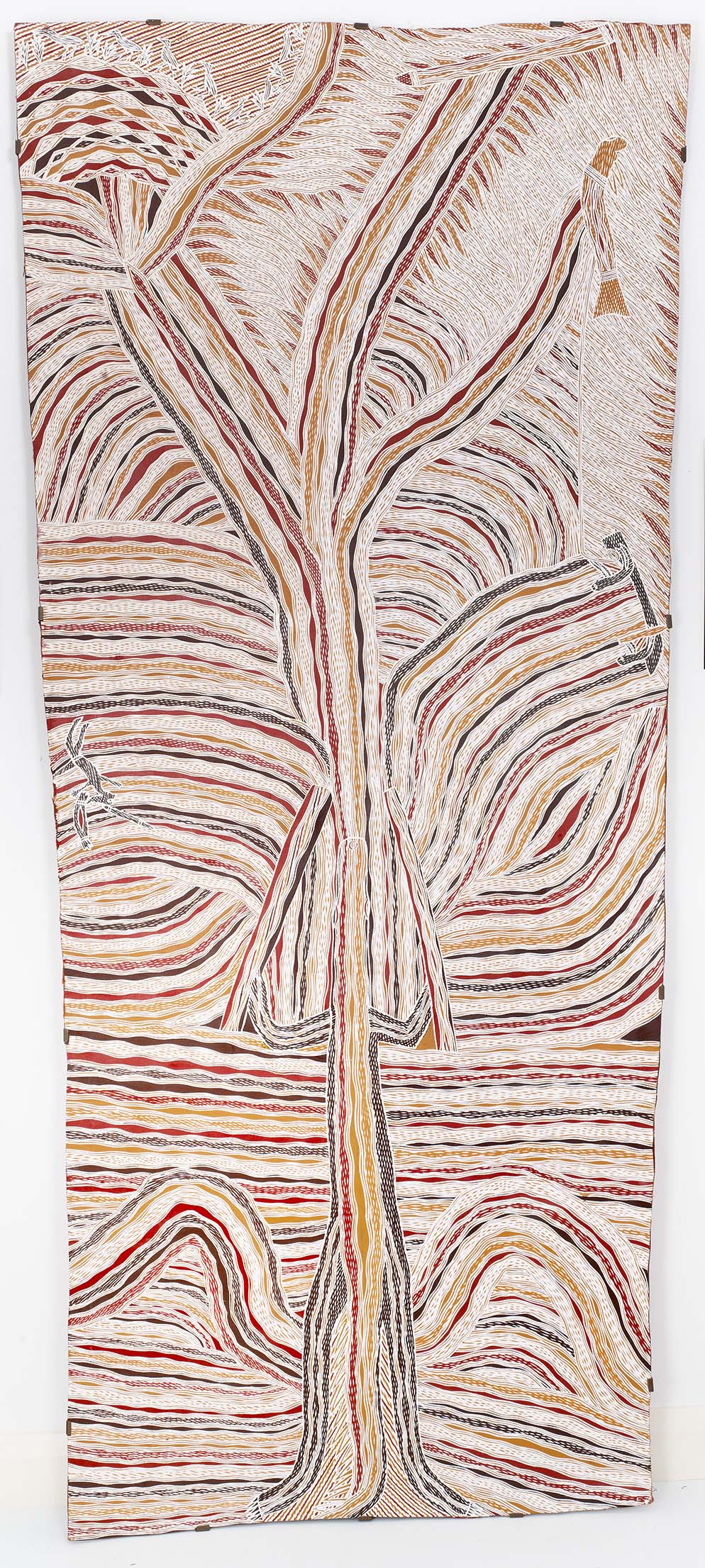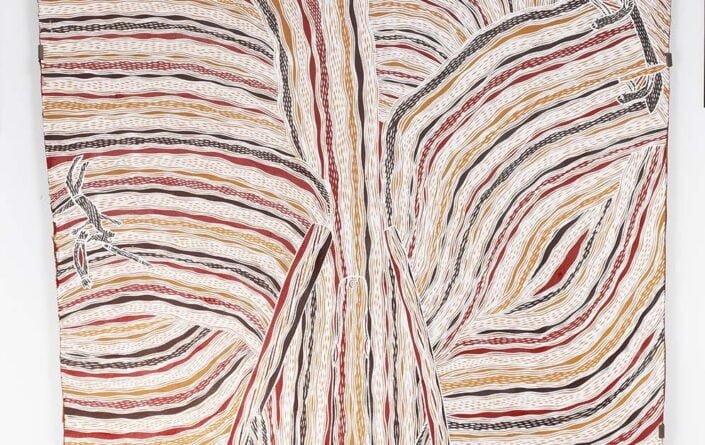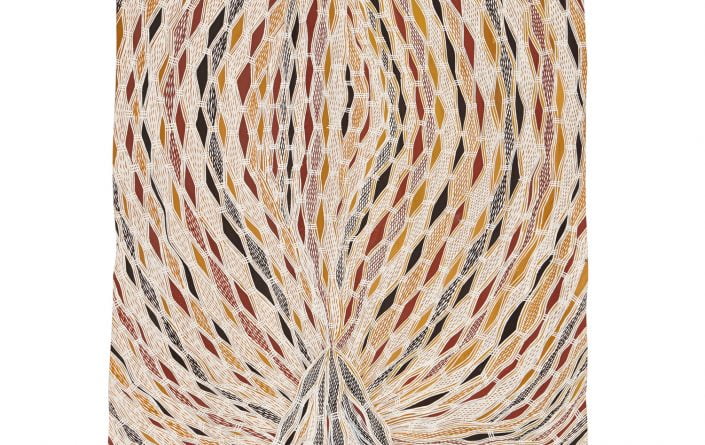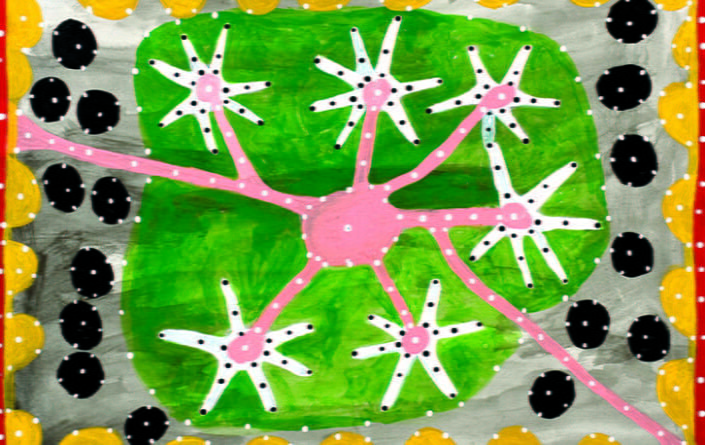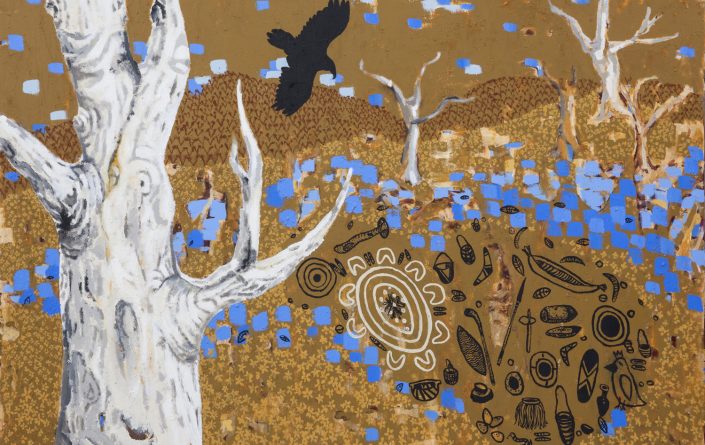Djambawa Marawili
Djambawa Marawili AM began painting in the early 1980s. One of the most successful Yolngu artists of recent times, he has spearheaded a number of significant innovations within the tradition of Yolngu art. Key among these is buwuyak (invisibility), a development that has seen Marawili and his contemporaries move beyond the overt figuration often employed by their immediate forebears.
While to Western eyes, buwayak—which is marked by the dense patterning of minytji (sacred clan designs)—appears to be a move towards abstraction, the opposite is more accurate. The shimmering fields that Marawili often employs to overlay and obscure distinct figurative elements are embedded with textual meaning: they can, quite literally, be ‘read’ by Yolngu eyes. This inversion points towards the formal and conceptual elasticity that activates much Indigenous contemporary art and is a hallmark of contemporary Yolngu practice in particular.
Marawili’s paintings generally depict the ancestral story associated with Yathikpa, the bay into which the burning ancestral being Bäru plunged and transformed from his human form into that of a crocodile. In terms of content, the gravitas of Marawili’s subject matter relates to the similarly grand ancestral narratives of Gija artist Rusty Peters’ work, perhaps more directly than it does to the work of fellow Yolngu artist Nyapanyapa Yunupingu. In recent years her paintings have been celebrated for their distinctive shift away from explicit textual meaning, a marked contrast to Marawili’s work.
March 2014Djambawa Marawili AM began painting in the early 1980s. One of the most successful Yolngu artists of recent times, he has spearheaded a number of significant innovations within the tradition of Yolngu art. Key among these is buwuyak (invisibility), a development that has seen Marawili and his contemporaries move beyond the overt figuration often employed by their immediate forebears.
While to Western eyes, buwayak—which is marked by the dense patterning of minytji (sacred clan designs)—appears to be a move towards abstraction, the opposite is more accurate. The shimmering fields that Marawili often employs to overlay and obscure distinct figurative elements are embedded with textual meaning: they can, quite literally, be ‘read’ by Yolngu eyes. This inversion points towards the formal and conceptual elasticity that activates much Indigenous contemporary art and is a hallmark of contemporary Yolngu practice in particular.
Marawili’s paintings generally depict the ancestral story associated with Yathikpa, the bay into which the burning ancestral being Bäru plunged and transformed from his human form into that of a crocodile. In terms of content, the gravitas of Marawili’s subject matter relates to the similarly grand ancestral narratives of Gija artist Rusty Peters’ work, perhaps more directly than it does to the work of fellow Yolngu artist Nyapanyapa Yunupingu. In recent years her paintings have been celebrated for their distinctive shift away from explicit textual meaning, a marked contrast to Marawili’s work.
March 2014

